The History Behind Our Favorite Christmas Traditions
Christmas trees weren’t always the lovely green firs we have today, and Mariah Carey didn’t always have the number one Christmas hit. Christmas traditions have changed over the years, while some have persisted despite their origins being forgotten.
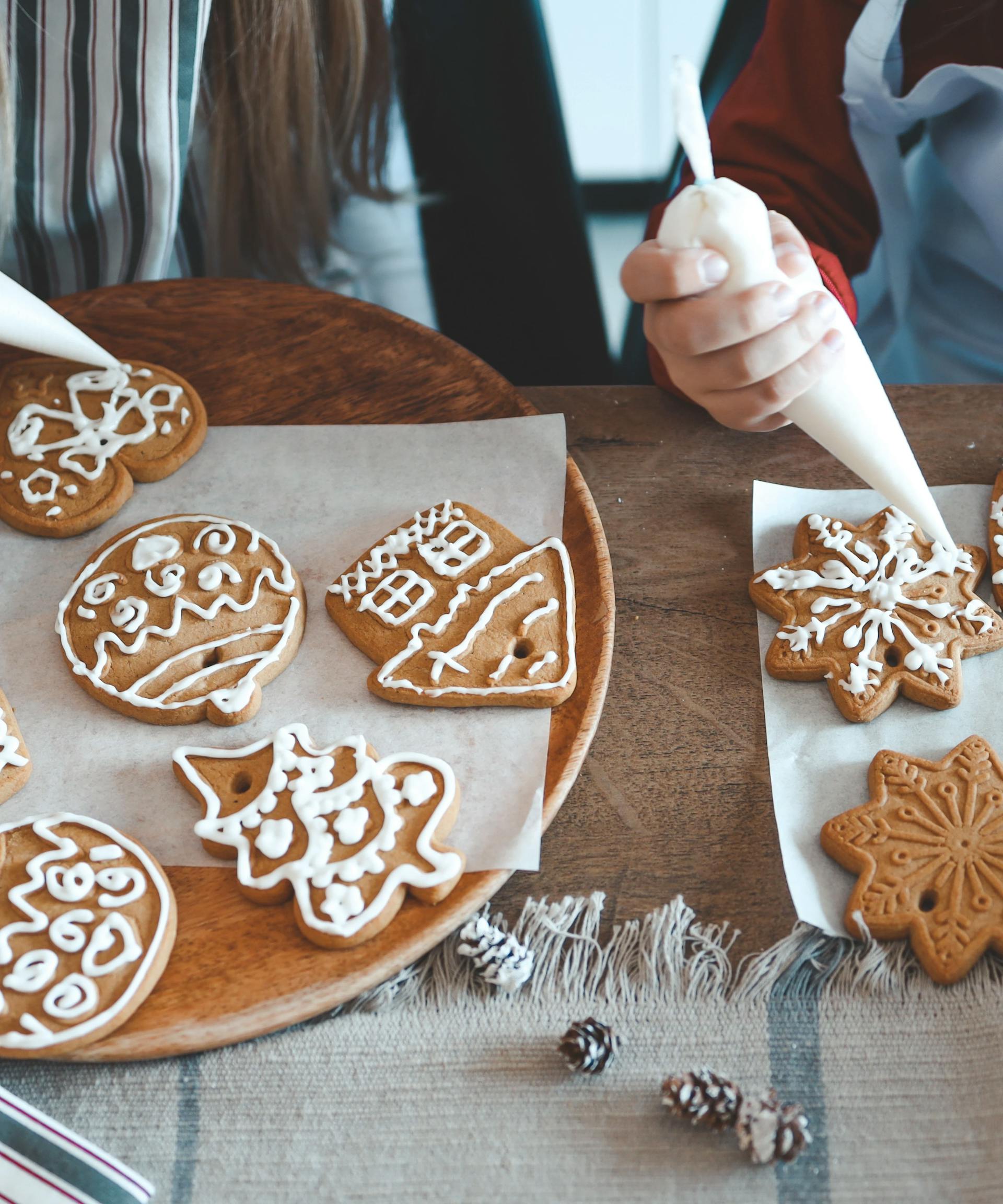
Here’s a look at some of the customs that once brought — and still bring — merriment and festivity to the days of December.
The Christmas Tree
The tradition of bringing a tree into one’s home began in 16th-century Germany when Christians erected trees in their living spaces to celebrate the birth of Christ. German settlers in Pennsylvania brought the custom to America. In the early ‘60s, though, trees made of aluminum became all the rage. People typically paired these aluminum trees with color wheels that rotated to cast multicolored light upon the tree. This trend did not last long. The 1965 A Charlie Brown Christmas spurred the return of real trees in American homes.
While the green fir — real or fake — is once again popular, the decorations have drastically changed. Cranberry and popcorn garland, tinsel, salt dough ornaments, candy canes, and trains around the tree’s base have, for the most part, been replaced by baubles, collectible ornaments, and white lights. The angel tree topper has even taken a back seat to sleeker stars and bows.
Christmas Bites
Christmas time has always been a time of feasting, but the sweets and treats have changed over the years. Everyone knows the opening line of Nat King Cole’s 1946 hit “The Christmas Song”: “Chestnuts roasting on an open fire.” This line speaks of a holiday favorite in America at the time the carol first became famous. Chestnut trees covered the Eastern seaboard, making roasted chestnuts a treat in nearly every household. Unfortunately, a blight destroyed almost every chestnut tree in the early 1900s, and the tradition became all but extinct.
Other holiday favorites such as mincemeat pies, fruitcake, sticky toffee pudding, and gelatin molds are rarely seen on American tables anymore. The Yule log — or Buche de Noel — is making a comeback, though. Popularized in 19th century France, this buttercream-frosted sponge cake is meant to resemble the medieval Yule log that was burned to usher in the winter solstice. Fruitcake, a delicacy of the 18th and 19th centuries, still sometimes makes an appearance — but often as either a joke or a nod to nostalgia.
The goodies stuffed in stockings look different today, too. It was common during the era of the Great Depression to fill stockings with oranges and walnuts — then luxuries. Oranges were also seen as symbolic of the gold that Saint Nicholas supposedly tossed into the stockings of the daughters of a poor man. Candy canes, treats that date back to the 1600s and symbolize the crooks of the shepherds present at the birth of Jesus, are still popular stocking stuffers. However, Reese’s Christmas trees and Christmas Hershey’s kisses are by far the modern child’s favorites.
Christmas cookies — sugar, gingerbread, white chocolate cranberry — are a Christmas staple, and the tradition of leaving a plate for Santa will stick around as long as there are children hoping to catch sight of the jolly fellow’s boots tiptoeing across their living room. The custom of hosting a neighborhood cookie exchange is now an antiquated one, though. It’s certainly a tradition to bring back, as it’s a wonderful way to gather friends together and spread Christmas cheer. No one will complain about leaving with a platter of delicious assorted cookies either.
Christmas Mail
Christmas cards are becoming less and less common, as the internet and social media have nearly extinguished the need for “snail mail.” It’s a lovely tradition to send out cards to your loved ones, though, and it should certainly stick around.
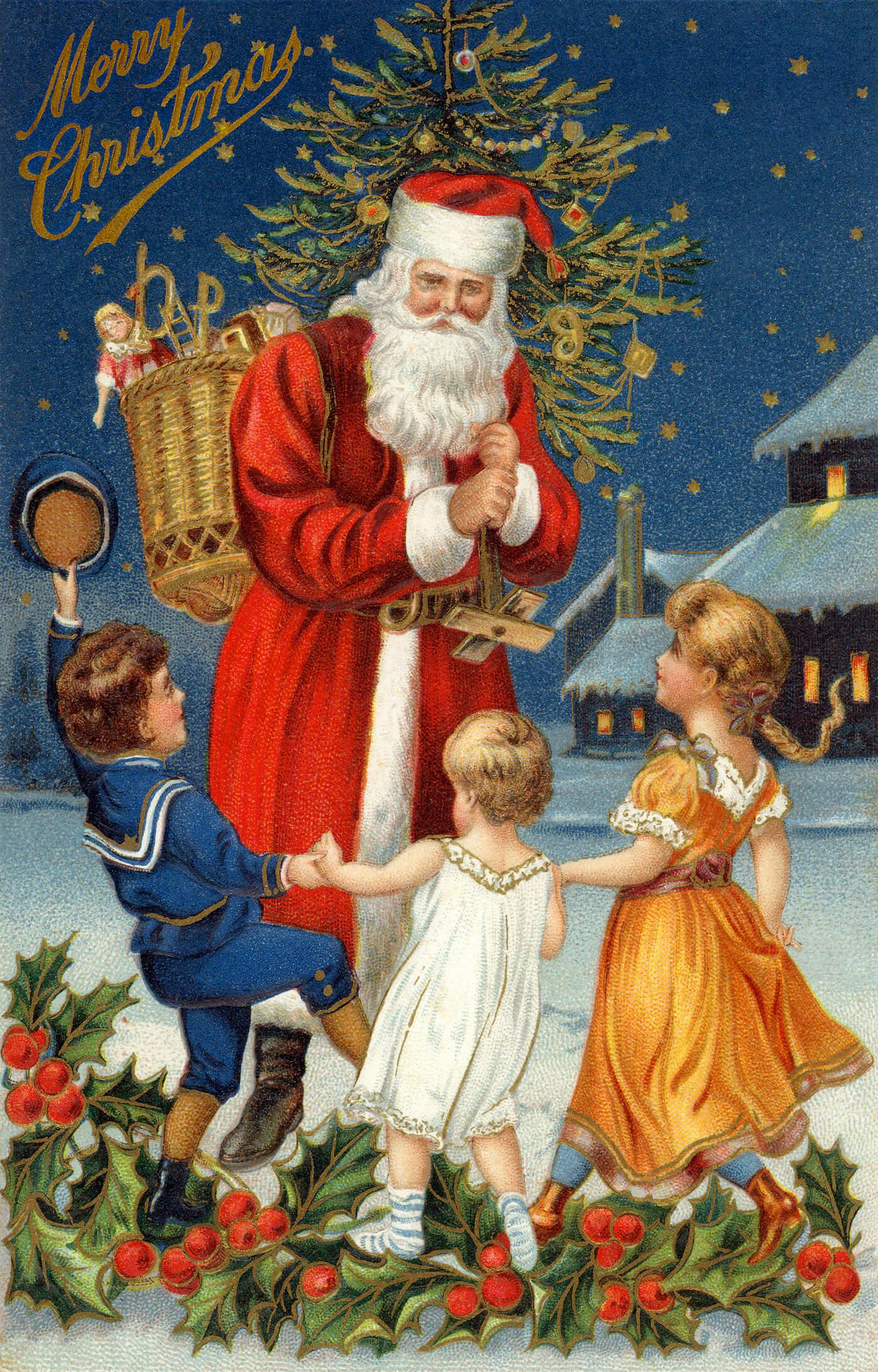
Illustrated Christmas card from the early 1900s.
Giving a gift to your mail carrier is also a rare custom these days. People used to give a token of thanks to their hard-working mailman during this busy time of year. Nowadays, most hardly even exchange greetings with their mailman. This is an unfortunate sign of our society becoming less and less personal. The Christmas season is the perfect time to change this with a simple act of generosity to those who serve us every day.
TV and Tunes
Everyone knows that when Thanksgiving has come and gone, it’s time to watch Elf and blast Mariah Carey’s “All I Want for Christmas is You.” Around since the ‘90s and early 2000s respectively, some may now consider these Christmas classics. There are some films and carols far more classic, though.
While there are some recent Christmas films that are absolutely worth the watch (Elf, The Holiday, and Love Actually to name a few), nothing beats the classics. A Christmas Story, Frosty the Snowman, A Charlie Brown Christmas, Miracle on 34th Street, and — of course — It’s a Wonderful Life are movies that should never go unwatched during the Christmas season.
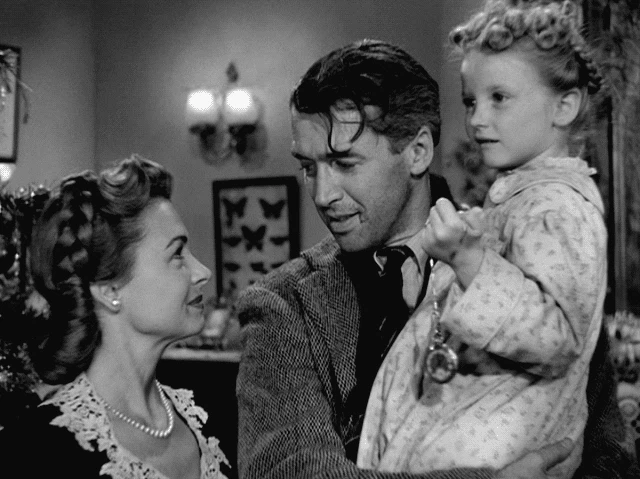
The real old school names of Christmas music are Bing Crosby, Judy Garland, Nat King Cole, and Frank Sinatra. Bing Crosby’s 1942 “White Christmas” is the best-selling single of all time according to the Guinness Book of World Records. His “I’ll Be Home for Christmas” also tops the list of greatest carols. Judy Garland’s “Have Yourself a Merry Little Christmas,” Nat King Cole’s “The Christmas Song,” Frank Sinatra’s “Let it Snow! Let it Snow! Let it Snow!” — to experience a truly “vintage Christmas,” put these records on.
Caroling
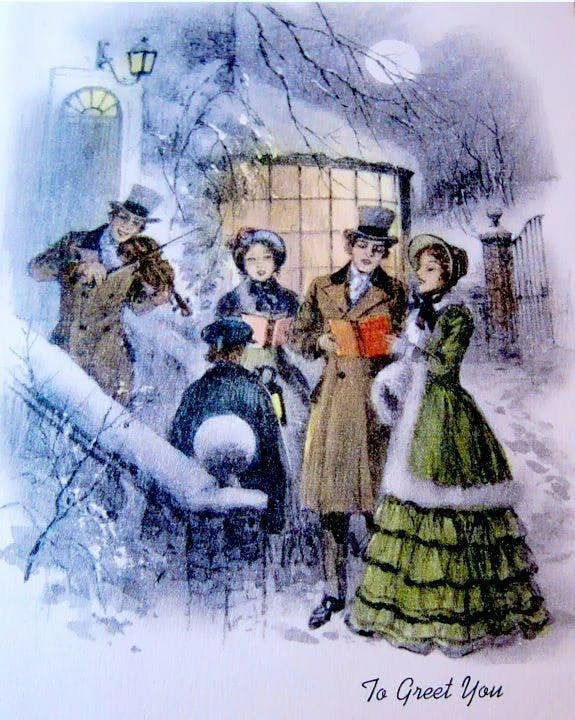
Another tradition that seems to (unfortunately) be on its way out is caroling. It was once common to see groups of festively-clad singers ambling down the street, going door to door, and singing merry tunes. Restarting this fun custom would bring much cheer to all around!
Pageants and Ballet
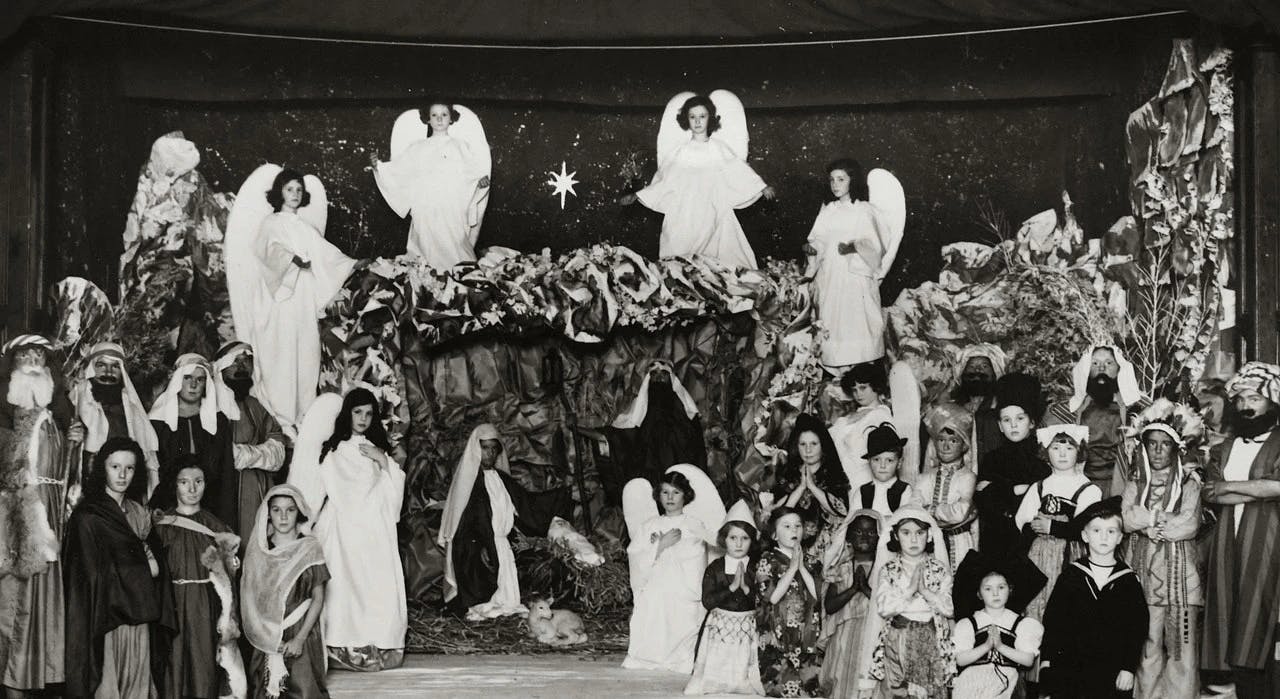
It was also once very common to attend at least one Christmas pageant — usually complete with 5-year-olds in angel costumes — and/or a recital of The Nutcracker during the Christmas season. Pageants are on their way out as our society becomes more and more secular and politically correct, and attending the ballet is becoming an increasingly old-fashioned-seeming (or elitist) activity.
The Pickle Ornament
The tradition of hanging a pickle ornament on the Christmas tree is said to have its origins in Germany, though it’s more likely that an American salesman in the 1800s concocted the story to sell the German glass ornaments. Regardless, it quickly became a popular tradition in the U.S. for parents to hide the pickle ornament on the tree, and the child who found the hidden ornament on Christmas morning was allowed the privilege of opening the first gift. The ornaments are still popular today, though their history remains unclear.
Creche Scenes
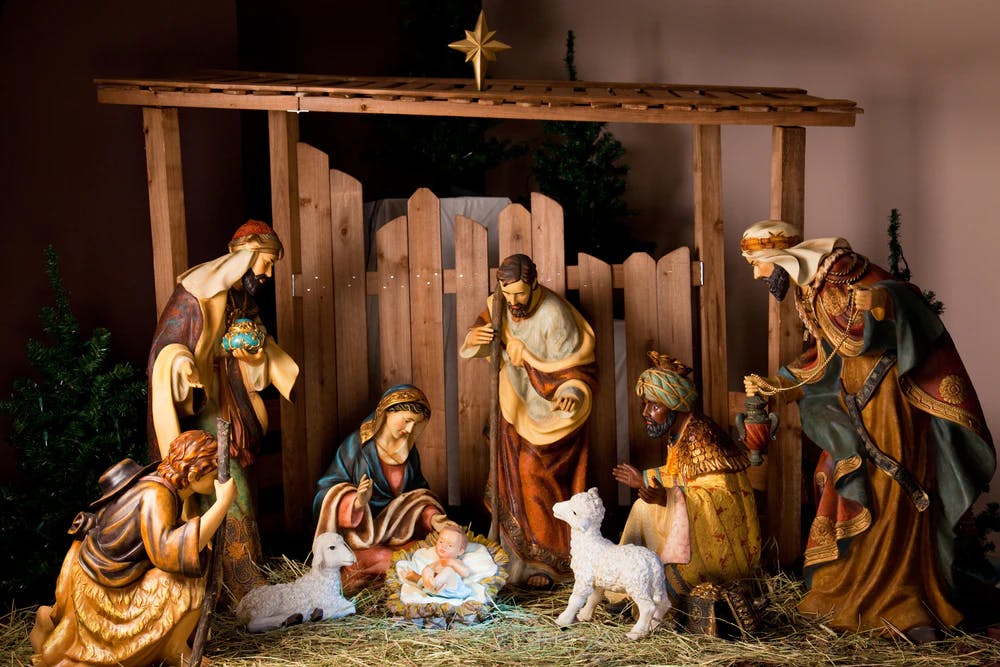
The creche or nativity scene was made popular in the 13th century by Saint Francis of Assisi. The Italian saint wanted to bring the town of Bethlehem to his own town for the great celebration of Christmas. So, with the help of another devout man, they erected the scene of Jesus’ birth. The practice of “bringing Bethlehem” to one’s town quickly spread. Creche scenes can still be seen on mantles and front lawns, though secular decorations — such as snowglobes and blow-up Santas — are now more common.
Advent Calendars
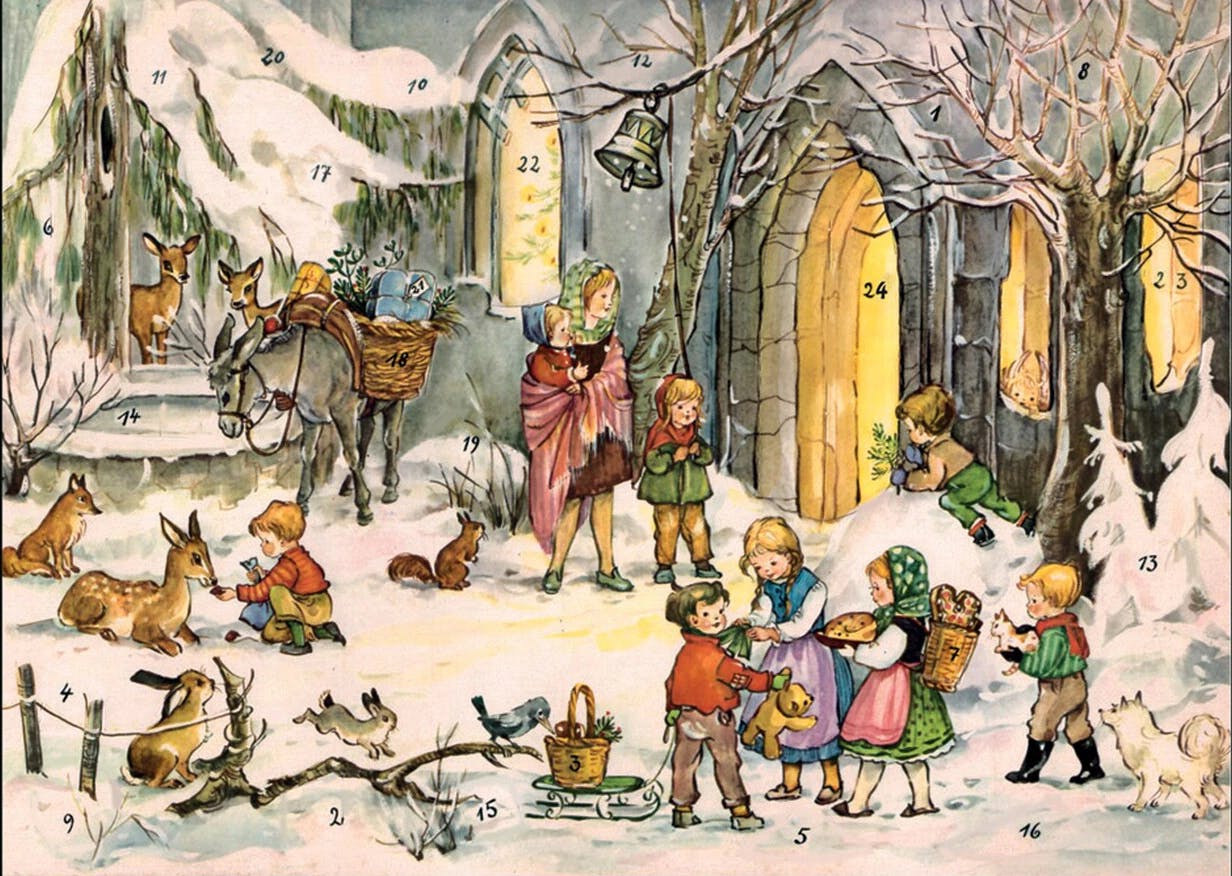
The Advent calendar, like so many Christmas traditions, has its origins in Germany. In the early 19th century, German Christians marked the days leading to Christmas by marking chalk on their walls and hanging a new devotional image each day. This eventually led to the creation of the wooden Advent calendar. Over the years, the calendar transitioned into the cardboard, chocolate-filled ones that we know today. They’re now often devoid of religious meaning and are rather a simple countdown to Christmas for eager children.
Mistletoe
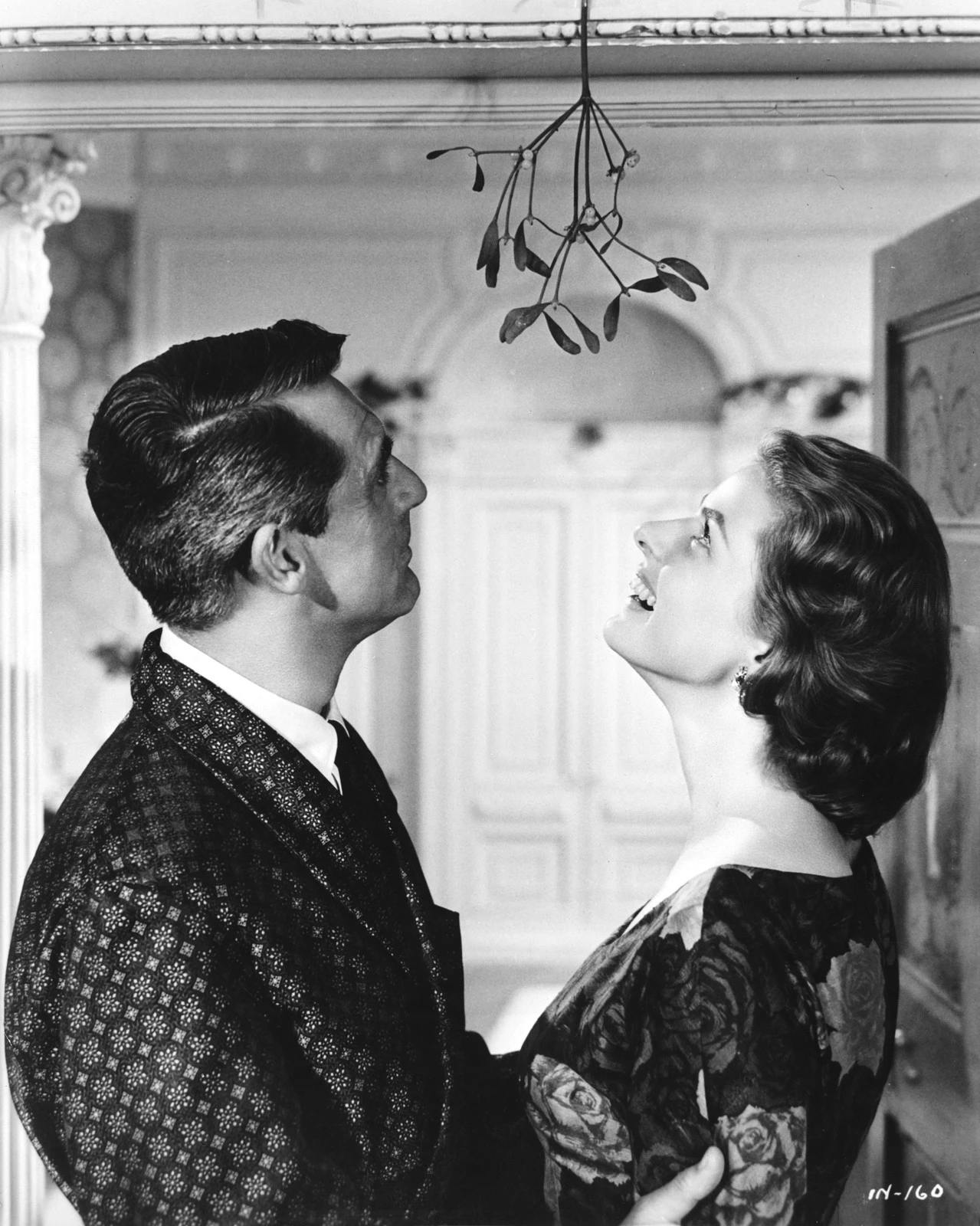
Cary Grant and Ingrid Bergman shared a giggle under the mistletoe.
Kissing under the mistletoe dates back to the 1st century, when Celtic Druids considered the winter-blossoming herb a symbol of vivacity and fertility. In the 18th century, the “romantic” herb became incorporated into Christmas celebrations and was often hung in doorways where men would steal kisses from women who were caught standing beneath it. In Victorian England, if a woman refused a kiss, it was believed that she would not receive any marriage proposals for an entire year. Nowadays, people take it less seriously but still use it as an excuse to pucker up around the holidays.
Closing Thoughts
Christmas traditions have evolved greatly throughout the years. It can be great fun to revisit the ‘why’ behind our customs and to bring back those that have been lost to passing years. Others — like gelatin molds — can remain happily replaced by newer practices.